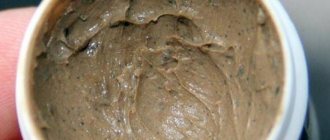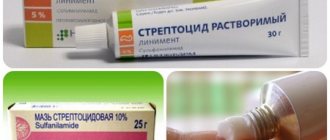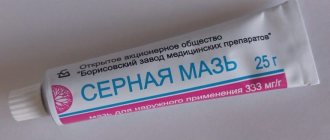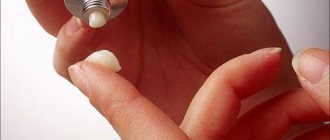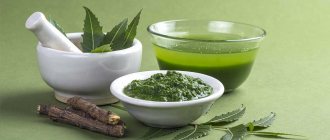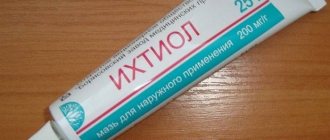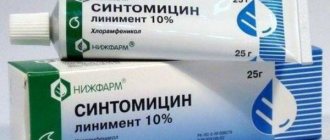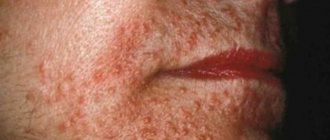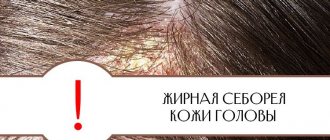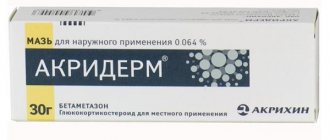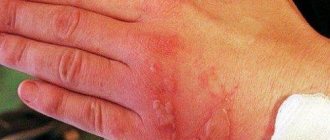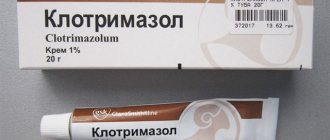Wearing anatomically uncomfortable shoes made of artificial and low-quality materials sooner or later leads to the formation of so-called corns - dry calluses on the feet. If the situation worsens, such growths cause their owner a lot of discomfort, from pain when stepping on them to the unaesthetic appearance of the foot. That is why many try to purchase ointment for dry calluses as soon as possible in order to limit themselves from the need to go to the doctor and have hardware remove the growths. We will discuss below how Salicylic ointment for calluses works in this case and how to use it.
Composition and release form
The ointment consists of the active ingredient salicylic acid. This acid regulates the functioning of the sebaceous glands, penetrating the lipid layers of the skin, cleansing it of oil and bacteria that lead to clogging of pores. Promotes softening and removal of the stratum corneum of the epidermis, making the skin surface smoother. Stimulates cell turnover by exfoliating the inner and outer layers of the skin. Helps in eliminating inflamed and painful acne.
An additional component of the ointment is medical petroleum jelly, which is involved in the uniform distribution of the product in the same amount at each area of application.
Currently, manufacturers produce several types of ointments that contain salicylic acid. These include:
- Salicylic ointment.
- Sulfur-salicylic ointment.
- Salicylic-zinc ointment.
Salicylic ointment contains only salicylic acid as an active substance. In addition to acid, the composition of sulfur-salicylic ointment includes another main component – sulfur. Salicylic-zinc ointment also includes zinc oxide. These drugs have some differences associated with the therapeutic effect.
Salicylic ointment has the appearance of a thick, greasy, homogeneous mass, white or grayish in color, dense in composition.
Today, salicylic ointment is produced in concentrations of 1%, 2%, 3%, 5%. In addition to these designations, the numbers 10, 35, 50 are quite common. They indicate the capacity in grams or the size of the tube that contains the medicine. Packaged in dark glass jars or aluminum tubes.
Interaction
Before starting treatment, you should tell your doctor if you are taking any medications.
Salicylic ointment should never be mixed with medications that contain resorcinol, because they form a molten mixture. Also, you should not mix salicylic ointment with zinc oxide, because an insoluble salt is formed.
The ointment increases the permeability of the skin to other medications, including glucocorticoid hormones, which are included in ointments (Dexamethasone or Triderm).
Salicylic ointment may increase the side effects of hypoglycemic drugs (they reduce blood sugar levels in diabetes).
Effect of salicylic acid
The drug based on salicylic acid is characterized by the presence of a therapeutic effect and acts in the following directions:
- has an antiseborrheic orientation;
- has keratolytic properties;
- has an anti-inflammatory effect;
- reduces the production of sweat by the skin glands;
- eliminates pathogenic microorganisms;
- promotes wound healing;
- relieves swelling and irritation;
- dries and treats acne.
The active substances of the ointment are able to penetrate deep into the skin, thereby eliminating the problem that causes inflammation from the inside, removing all unwanted elements through the pores.
The effect of the drug on dry calluses
Dry calluses occur due to long or prolonged pressure on a certain area of the skin. This problem can arise due to uncomfortable shoes or in people who draw and write a lot. Most often, a hard callus is considered the second stage of a wet callus, but sometimes it arises on its own, bypassing the first stage.
An alcohol solution of salicylic acid is suitable for treating dry calluses.
The formations are lubricated with a cotton pad, which leads to their softening. If the stage is advanced, then it is better to leave the compress overnight, and then carefully remove the softened skin. In addition to softening, such a compress will also have a healing effect. If the skin is damaged and the callus causes discomfort, then Bensolitin ointment, which contains not only salicylic acid, but also benzoic acid, is suitable for further treatment.
Indications for use of salicylic ointment
Salicylic ointment has great potential, which allows it to be used for the following symptoms:
- oily seborrhea;
- infectious and inflammatory skin processes;
- bacteria living in the layers of the dermis;
- corns, calluses;
- increased sweating;
- ichthyosis;
- pityriasis versicolor;
- warts;
- hyperkeratosis;
- presence of acne;
- dyskeratosis;
- burns;
- eczema.
Salicylic ointment stops the process of inflammation, reduces its severity, thereby preventing the spread of the inflammatory effect to neighboring tissues.
Contraindications and side effects
The use of the drug is contraindicated in the presence of renal failure, anemia, or stomach ulcers. Do not cover genitals, birthmarks, or hairy warts with ointment. It is forbidden to use the product if you are hypersensitive to any of the components of the drug. It is not recommended to use the medicine during pregnancy and breastfeeding, as the medicine has the ability to penetrate the blood system, which has a detrimental effect on the development of the fetus. In extreme cases, you can use ointment at a concentration of 1% or 2%. Use with caution in children, after consultation with a specialist.
Read more Instructions for use of Synthomycin ointment
Reviews
To get a complete picture of the medicine, the article also contains reviews from patients who used the product to remove warts.
Maria, 27 years old. The ointment really helps. Recently, I was horrified to discover small warts on my hands and immediately ran to the pharmacy, because... Treatment of this disease cannot be delayed. After a few weeks, the warts became noticeably smaller, and soon disappeared completely. I am very pleased.
Vladislav, 48 years old. For about 10 years I have been suffering from such an unpleasant illness as warts. So much money was wasted on treatment, but none of the advertised drugs helped. I went to another city on a business trip. There, the pharmacist advised me of the usual salicylic ointment, which costs mere pennies, and everyone knows it. I started using it actively and after a few days I noticed the first result.
Andrey, 23 years old. Since childhood, I remember how my grandmother treated warts using salicylic ointment. When I encountered this disease, I immediately went to the pharmacy. As a result, not a trace of the warts remained after just 10 days.
Ekaterina, 53 years old. Salicylic ointment is always in my medicine cabinet. Recently a small wart appeared on my face. I began to actively treat it and after a few days it fell off. She didn't bother me anymore.
Instructions for use
Salicylic ointment is intended only for external use, in the required concentration for the treatment of various skin diseases.
For the treatment of pimples, acne, and comedones, the product is used in a weak concentration of 1–2%. For dry and sensitive skin, the medicine is mixed with Vaseline in a ratio of 1:4. Before application, wash the affected area well, then dry with a napkin. If there is an open wound, an abscess, it is treated with hydrogen peroxide or chlorhexidine. Apply directly to each pimple, or lubricate the damaged area 2-3 times a day, depending on the area of the rash. The course of treatment ranges from one to three weeks.
In the treatment of psoriasis, during an exacerbation, an ointment containing 1–2% salicylic acid is used, and during remission 3–5%. The medicine is applied to the lesions 2 times a day, covering them with bandages or sterile gauze napkins. If small cracks appear on the affected area of the skin that bleed, the product is mixed with Vaseline. The course of treatment is from a week to 20 days. Then a mandatory break is required.
To eliminate warts, use 5% salicylic ointment. Before starting treatment, steam the area of skin with the tumor, wipe it thoroughly dry, and then apply a thin layer of the product to the wart. A sterile bandage is applied on top and left overnight or for 12 hours. When removing the bandage, the wart is treated with a piece of pumice, removing dead skin particles. Next, repeat the treatment of the remaining wart with 5% salicylic ointment and remove the soft layer of formation with pumice. Treatment is repeated until the wart is completely removed. Treatment time is from 3 to 5 weeks. If redness, itching or another allergic reaction occurs while using the ointment, you need to take a break.
To remove papillomas, the drug is applied in a small amount to a prepared area of skin, fixed with a plaster, or a cotton pad or gauze pad soaked in the composition is applied to the affected area. The dressing is changed 2-3 times a day. After the procedure, the skin is washed well with warm soapy water. The course of treatment is 21 days.
Salicylic ointment is well used to remove old calluses, corns, and as a quick healing agent for the formation of fresh calluses.
Dense calloused areas of skin are steamed in hot soapy water and wiped dry. Then a thin layer of 5% ointment is applied to the problem area, wrapped with cling film on top and socks are put on. The entire procedure is performed overnight. The compress is removed in the morning and the legs are steamed again. Softened formations are cleaned off with pumice or a special file. Daily procedures are carried out for 2 weeks. In advanced cases, more time for treatment is needed.
Read more Instructions for using Tacropic ointment
To treat newly formed (wet) calluses, a 2% ointment is required. The callus is treated with a thick layer of the drug and left for several hours. After 6–7 hours, the callus will dry out and begin to heal. The wound site is treated until complete healing.
Mode of application
The ointment should be applied to the wart and covered with a sterile bandage. The dressing should be changed once every 2-3 days until the wart dies completely. This ointment is also used to remove flat and other types of warts. In addition, the ointment is used to remove warts on the legs. Treatment lasts from 6 to 20 days.
The duration of therapy is selected individually.
Additional Information
Before applying the drug, it is necessary to check how the body reacts to the active drug. To do this, a small amount of salicylic ointment is applied to a healthy area of the skin for 15–20 minutes. waiting for a reaction. If there are no manifestations of allergies, the medicine is safe to use.
To treat various diseases in children, only 1% or 2% salicylic ointment is used. Ointment with a higher concentration should not be used for children under 12 years of age. For infants under one year of age, use the drug at 1%.
If the medicine accidentally gets on the mucous membranes or eyes, you should quickly rinse the damaged area with plenty of clean water. If the medicine is swallowed, immediately induce vomiting, rinse the stomach and seek help from a medical professional.
An allergy to salicylic acid can manifest itself in the form of dryness, peeling, burning, urticaria, slight fever, and contact dermatitis. Long-term use of the drug in some cases can lead to kidney failure or increased blood clotting. If side effects occur, the use of the medication should be discontinued.
The medicine does not affect the ability to drive a vehicle or use other machinery.
Salicylic ointment should be stored at a temperature not exceeding 20 degrees, in a warm, dry place, out of reach of children. It is not recommended to place the product at low temperatures. Shelf life 2 years from the date of manufacture.
The average cost of 25 mg of salicylic ointment 2% is 25 rubles, 3% – 30 rubles, 5% – 35 rubles. The price may vary depending on where you live.
Operating principle
The effectiveness of the product is based on the presence of salicylic acid in its composition. It has a number of therapeutic properties, among which the following are significant in the treatment of corns:
- Keratolytic - the composition of the drug dissolves the rough layer of skin. The epidermis softens, which makes it easier to remove the defect using manicure tools. At the same time, salicylic acid slows down the appearance of new keratinized scales, stopping the growth of formation.
- Antiseptic - the active substance leads to the death of the most common microorganisms. This eliminates or prevents secondary infection. At the same time, the product helps to cope with hyperkeratosis (thickening of the stratum corneum of the epidermis) caused by the fungus.
The drug relieves inflammation (if any) and helps reduce sweating in the problem area.
To treat corns, you should choose an ointment with a concentration of the active substance of 5-10%.
The standard recipe for the product includes only petroleum jelly and salicylic acid. But depending on the manufacturer, the composition may also include other components with a keratolytic effect.
Analogs
In terms of their therapeutic effect, there are a number of similar analogues of salicylic ointment. These include:
- Not a callus.
- Collomak.
- Dufilm.
- Uroderm.
- Kerasil.
- Elixin.
- Salicylic zinc paste.
- Reparil N.
Read more Cream and ointment Gistan - instructions for use
To achieve a positive effect from these medications, it is better to consult a dermatologist, who will select the most suitable drug for the treatment of a particular disease.
